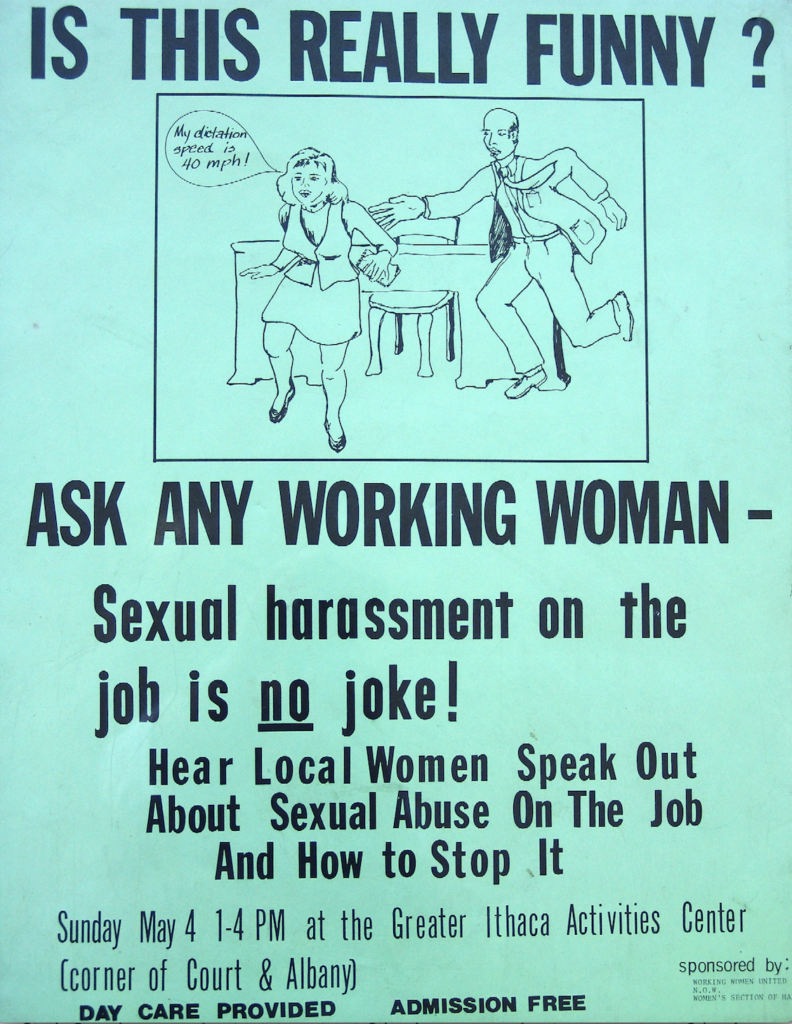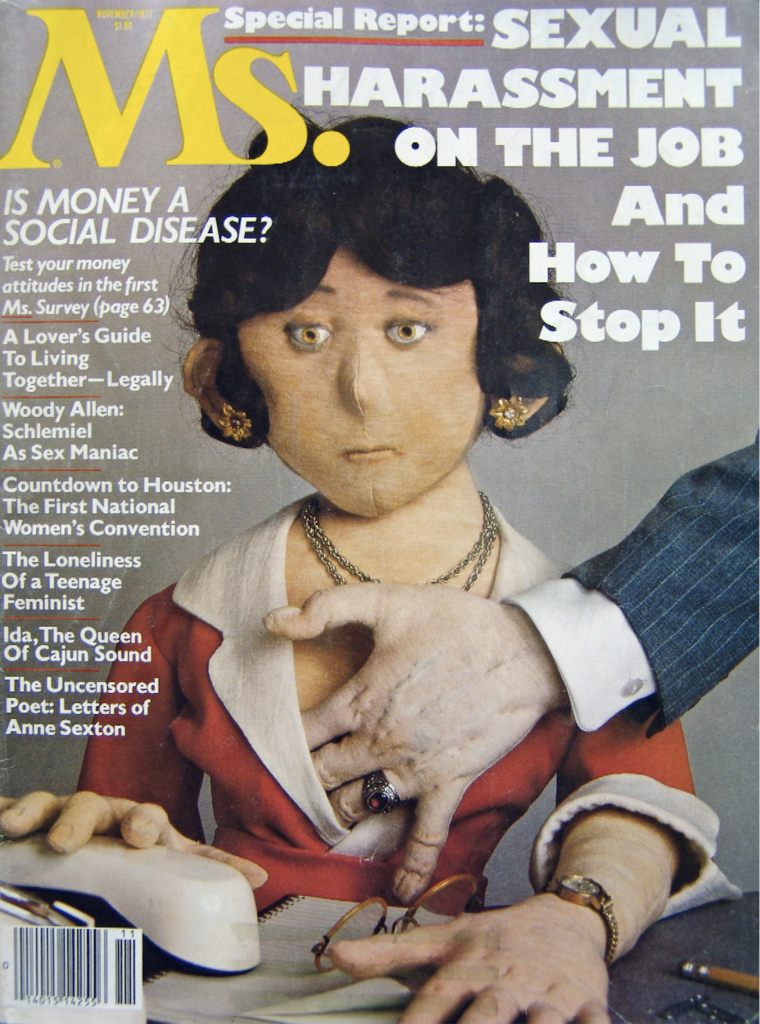On June 16, pioneering feminist attorney Nadine Taub passed away at the age of 77.

Taub was a professor at Rutgers Law School from 1973 until 2000. In the early 1970s, she founded Rutgers’s Women’s Rights Litigation Clinic (the first of its kind in the country), and for many years she was the faculty advisor of the “Women’s Rights Law Reporter“—the first U.S. legal periodical to focus exclusively on the field of women’s rights law.
Taub played a pivotal—but largely unrecognized—role in the development of sexual harassment law in the United States. With her students’ assistance, Taub litigated one of the first sexual harassment cases, Adrienne Tomkins v. Public Services Elec. & Gas. Co., brought in 1974, before the term “sexual harassment” was even coined. (That happened in 1975 for the first speakout in Ithaca, New York).

Adrienne Tomkins was a stenographer whose boss, Herbert D. Reppin, gave her an ultimatum to have sex with him or lose her job. In her quest to defend her client, Taub developed a novel legal argument to explain how sexual coercion in the workplace is a form of sex discrimination, and violates the Civil Rights Act of 1964. She argued Reppin’s sexual demands were based on the stereotype of women as “sex objects” and that employer tolerance of this behavior disadvantaged women in the workplace.
The lower court judge ruled against Tomkins, arguing the alleged misconduct was a private matter that was not employment-related, and did not amount to sex discrimination for which employers should be liable.
The judge also expressed fears about an onslaught of fabricated or trivial claims if he were to allow this type of case to proceed—an argument still commonly used today to discourage survivors of sexual harassment from coming forward.
Taub appealed the case to the Third Circuit, filing a fascinating brief in which she further developed her sex stereotyping theory. Taub argued that sexual harassment was a “reminder, a badge or indicia, of the servile status women have suffered in former societies and from which they are now trying to free themselves.”
Citing Susan Brownmiller’s 1975 book on rape, “Against Our Will,” Taub explained how men’s sexual dominance over women was originally based on physical force—then later, in the industrial era, based on economic wealth and power. While the twentieth century had brought tremendous change, she argued, “To make a woman’s advancement on the job depend on her sexual acquiescence is to resurrect her former status as man’s property or plaything.”
Taub argued allusions to sexual availability have an especially pejorative meaning for women—noting the tremendous number of sexually derogatory words in the English language. She argued that sexual harassment “strikes a particularly painful chord for women,” citing and discussing two early surveys on sexual harassment conducted by activists in the women’s movement. Taub’s brief was also the first to make a connection between sex discrimination cases and analogous racial harassment cases.
Seeking support of her new “sex stereotyping” argument, Taub leveraged the women’s movement to win the case. She recruited feminist lawyers and organizations—including Equal Rights Advocates and the Mexican American Legal Defense and Education Fund—to file amicus curiae briefs. Even the federal government’s Equal Employment Opportunity Commission filed a brief in support of Tomkins. She also packed the courtroom with her students during oral arguments.
In 1977, the court ruled in Tomkins’s favor in a groundbreaking decision dictating sexual harassment violated Title VII of the Civil Rights Act of 1964. The ruling came one month after Taub participated in a highly-publicized speak-out sponsored by Ms. magazine and Working Women United Institute, one of the first anti-sexual harassment organizations in the country.
Shortly after the court ruled in Taub’s favor, Ms. published the world’s first cover story on sexual harassment—a pivotal sign that women would no longer endure sexual harassment in silence. Taub later stated she believed the media coverage of sexual harassment generated by feminist activists influenced the judges to rule in Tomkins’s favor.

As a follow-up to the Tomkins case, Taub published a very influential law review article, “Keeping Women in their Place: Stereotyping Per Se As a Form of Employment Discrimination,” which fully developed her sexual harassment analysis.
She also worked on the first successful sexual harassment case against an educational institution under Title IX, Alexander v. Yale, and co-wrote a brief on behalf of the Women’s Legal Defense Fund in the first Supreme Court sexual harassment case, Meritor Savings Bank v. Vinson, which established a nationwide prohibition on sexual harassment under Title VII.
Throughout her 30-year career, Taub was at the center of many influential women’s rights cases. She litigated cases on behalf of survivors of rape and domestic violence, fought for low-income women seeking abortion access and for Princeton students seeking access to historically men-only eating clubs on campus.
She worked side-by-side with the future Justice Ginsberg in winning Califano v. Goldfarb—a 1977 Supreme Court sex discrimination case on Social Security benefits. She was also a member of the New Jersey Task Force on Domestic Violence and was co-author of the early and influential women’s rights law textbook, “Sex Discrimination and the Law: History, Practice and Theory” (1988).
But her key role in the development of sexual harassment law probably had the most impact on improving women’s daily lives. Her writings and legal arguments are still used today in law schools across the country. Her life’s work led to critical decisions that women rely on every day to affirm our rights in the workplace.
When people talk about the origin of sexual harassment law, Taub’s name rarely comes up. But here, upon her death, we should recognize her enduring legacy and thank Professor Taub for the absolutely pivotal role she played in developing sexual harassment law in the United States.
For more about Nadine Taub’s role in the feminist movement to transform sexual coercion in the workplace into a federal civil rights violation in the 1970s and 1980s, see Carrie N. Baker’s book, “The Women’s Movement Against Sexual Harassment” (including an interview with Taub) or read a condensed version of the story here.





